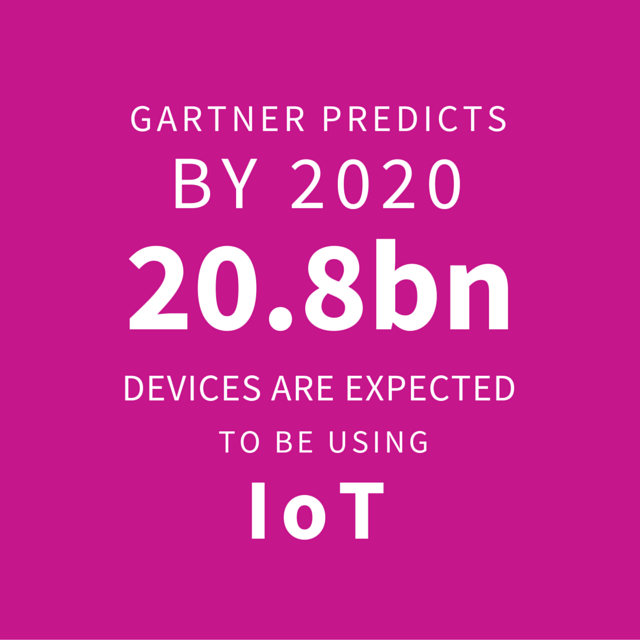The world was on the brink of huge change in 2007 when cloud computing, mobile devices, advanced analytics and artificial intelligence (AI) started to re-shape the way people operated and solved problems. Traditionally, building management systems (BMS) held all of the workplace intelligence. Today, we can take the information out of BMS and utilise the Internet of Things (IoT) to create smarter facilities management and real estate strategies.
What does all of this mean?
This influx of data from different sources will transform businesses into more streamlined and productive entities.
You may also like to read: 3 Ways that Technology will Change Business
Buildings undergoing construction today tend to already be planning for a smart building environment, ensuring that the multiple systems are all interconnected and have the capability to integrate with other IoT devices. However existing companies with legacy systems aren’t getting left behind. They’re also embracing change by undergoing upgrades and smart workplace projects to introduce smarter systems into their buildings and develop fully connected ecosystems.
So what are the inward and outward changes we can expect to see from these new intelligent buildings?
The ‘ins’ for intelligent buildings
Cost savings
It’s no secret that businesses have always had pressure to reduce costs. An intelligent building gives business owners and facilities managers a much clearer picture of where their building costs are going and where they can be reduced. Systems that control functions like heating, ventilation and air conditioning (HVAC); operated as standalone things, and creating cohesive reports from this variety of systems was a challenge to say the least. By integrating multiple systems and introducing smart technologies, organizations can create a smooth-running, efficient building and produce real-time accurate reports at the click of a button. Companies can also use external factors such as the temperature to control their office heating and cooling systems in advance, making further cost reductions.
Real estate
Corporate Real Estate professionals are leveraging intelligent buildings and their interconnected systems to develop further efficiencies and better informed workplace strategies. IoT brings together the management of multiple resources by centralizing everything in one place. Smart technologies like sensors can be spread around the workspace to monitor all sorts of things like: waste bins, coffee machines, photocopiers, meeting rooms and desk occupancy. This data is sent to the cloud allowing resource managers and real estate teams to manage their assets through any smart device, anywhere they go, and make quick, precise decisions regarding their real estate.
Data collection
Connected devices will generate 507.5 zettabytes (1 zettabyte = 1 trillion gigabytes) of data per year by 2019, according to a report published by Deloitte. This immense amount of data will help business leaders make accurate decisions about their future.
Francisco J. Acoba, Managing Director of Deloitte Consulting LLP sums up nicely how this data will effect our workplaces:
“As organizations design new workplaces, they are outfitting the infrastructure with tens of thousands of sensors to generate data on every aspect of the environment. Whether you are looking to advance order your “usual” coffee drink at the café, lower the temperature by three degrees in your workspace, or find the nearest available conference room with HD VC capability, you do not need to go any further than your smartphone.”
Personalization
Intelligent buildings will foster new levels of personalization in the workplace for people. Take beacon technology for example, it’s transforming the way people interact with technology and the workspace. Individuals no longer need to sign in and out of multiple platforms as beacons recognize who and where that person is within the office. Meetings no longer need to be manually started as the beacons in digital screens and sensors can instantly pick up when that person is present, creating a seamless, intelligent office experience.

The ‘outs’ for intelligent buildings
Smarter Utilities
The data that’s collected about your building can be shared outside of your walls with other organizations like energy companies and water suppliers, enabling them to plan more effective distribution. For example, the smart meters in an intelligent building can connect with the electricity grid and provide the electrical supplier with some incredible insights about how a city, region and even country is consuming their energy. This information enables power suppliers to divide the electricity most effectively and avoid future challenges.
External influences such as the weather forecast can also be used by utilities companies to help them allocate their supplies intelligently. If a water company knows that a particular city will be facing unusually high temperatures, they can distribute more water or send out consumption warnings ahead of time to reduce water shortages.
Smart Cities
This ability for businesses to share information easily will help to create a more unified, intelligent city. The dawn of the smart city is upon us, and it has the potential to create one of the biggest positive impacts on our physical and virtual environment to date.
Please share more inward or outward changes you believe we’ll see over the coming years below.